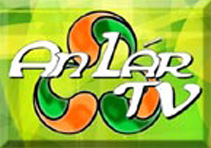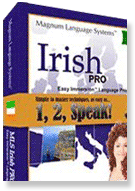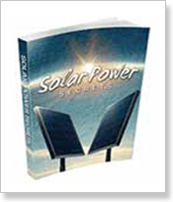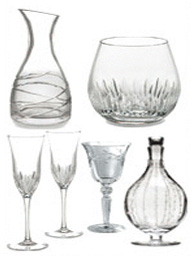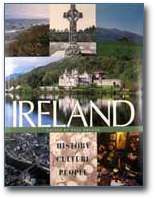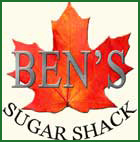History of The Irish Flag
 |
The Irish flag is known as the 'Irish Tricolour' and its history began in the early nineteenth century. It represents the unification of the old Ireland, with the green, and the new Ireland, with the orange; while the white between represents brotherhood. Irish tricolours were mentioned in 1830 and 1844 but widespread recognition was not given to the flag until 1848.
In April of 1848, Thomas Francis Meagher, the Young Ireland leader, brought a silk tricolour of orange, white and green from Paris and presented it to a Dublin meeting. John Mitchel said "I hope to see that flag one day waving as our national banner"; however, for many years the national flag continued to be the green one with a gold harp.
After the Irish Rebellion of 1916, the Anglo-Irish Treaty was ratified by the Dáil in January 1922 by a vote of 64 - 57. The losing side refused to accept the result and thus began the Irish Civil War, which lasted until 1923. In December of 1922, during the Civil War, the Irish Free State was born. During its early years, the new state was governed by the victors of the Civil War but, in the1930's, Fianna Fáil, the party of the opponents, was elected into government. The party proposed, and it was accepted in a referendum in 1937, that a new constitution be written which renamed the state "Éire" or, in the English language, "Ireland".
The Republic of Ireland written in gold lettering on a green background provided inspiration to the rebels in the seizure of the Government Post Office in the 1916 Uprising, where the flag flew alongside the Irish tricolour. The tricolour was not forgotten as a symbol of union and a banner associated with the Young Irelanders, but it was seldom used between 1848 and 1916. Up to the eve of the Uprising in 1916, the green flag with the gold harp was still being used. The arrangement of the early tricolours was not standardized and all of the 1848 tricolours showed green, white and orange; orange was sometimes arranged first and, in one case, the flag was ordered orange, green and white. In 1850, there was a proposal to have a flag of green for the Catholics, orange for the Protestants, and blue for the Presbyterians. It is recorded that, in 1883, a tricolour of yellow, white and green was arranged horizontally. Even in recent times yellow had occasionally been used instead of orange but this substitution destroyed the fundamental symbolism. In 1937, the national flag of the Republic of Ireland was formally confirmed by the Constitution in Article 7 which states, "The national flag is the tricolour of green, white and orange". Ireland was neutral during World War II, which was known locally as "The Emergency". It did offer some assistance to the Allies in Northern Ireland. It was estimated that around 50,000 volunteers from Éire/Ireland joined the British forces during World War II. In 1949, Ireland declared itself to be a republic. Because of the poor economy, Ireland experienced large-scale emigration in the 1950's and again in the 1980's. Starting in 1987, the economy improved, and the 1990's was the beginning of an unprecedented economic success known as the "Celtic Tiger". By 2007, it had become the fifth richest country per capita in the world and the second richest in Europe. Ireland moved from being a country of high emigration to one of high immigration. In 2006, there were talks between Ireland and the United States to form a new immigration policy between the two countries in response to the growth of the Irish economy and the desire of many U.S. citizens who wanted to move to Ireland for work. Ireland was a country that had been invaded by numerous civilizations or empires over its thousands of years of history. After all of its years under the rule of other nations, it is now looked upon as a huge story of success.
Disclaimer: LittleShamrocks.com is an affiliate website that receives commissions from sales of the products listed. We have purchased and sampled many, but not all, of the products on these pages.
© Copyright LittleShamrocks.com. All Rights Reserved.



